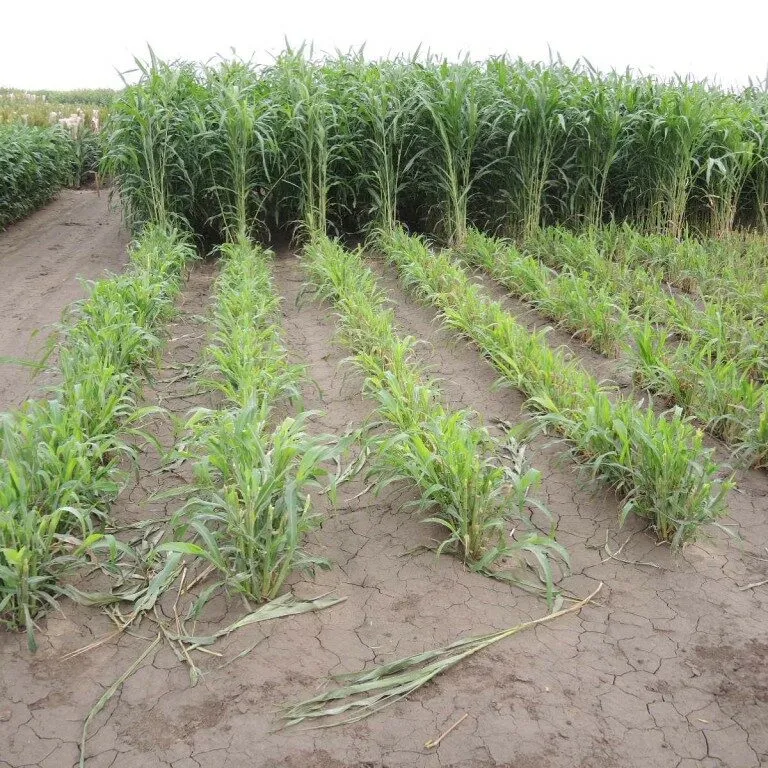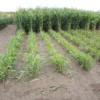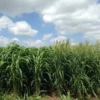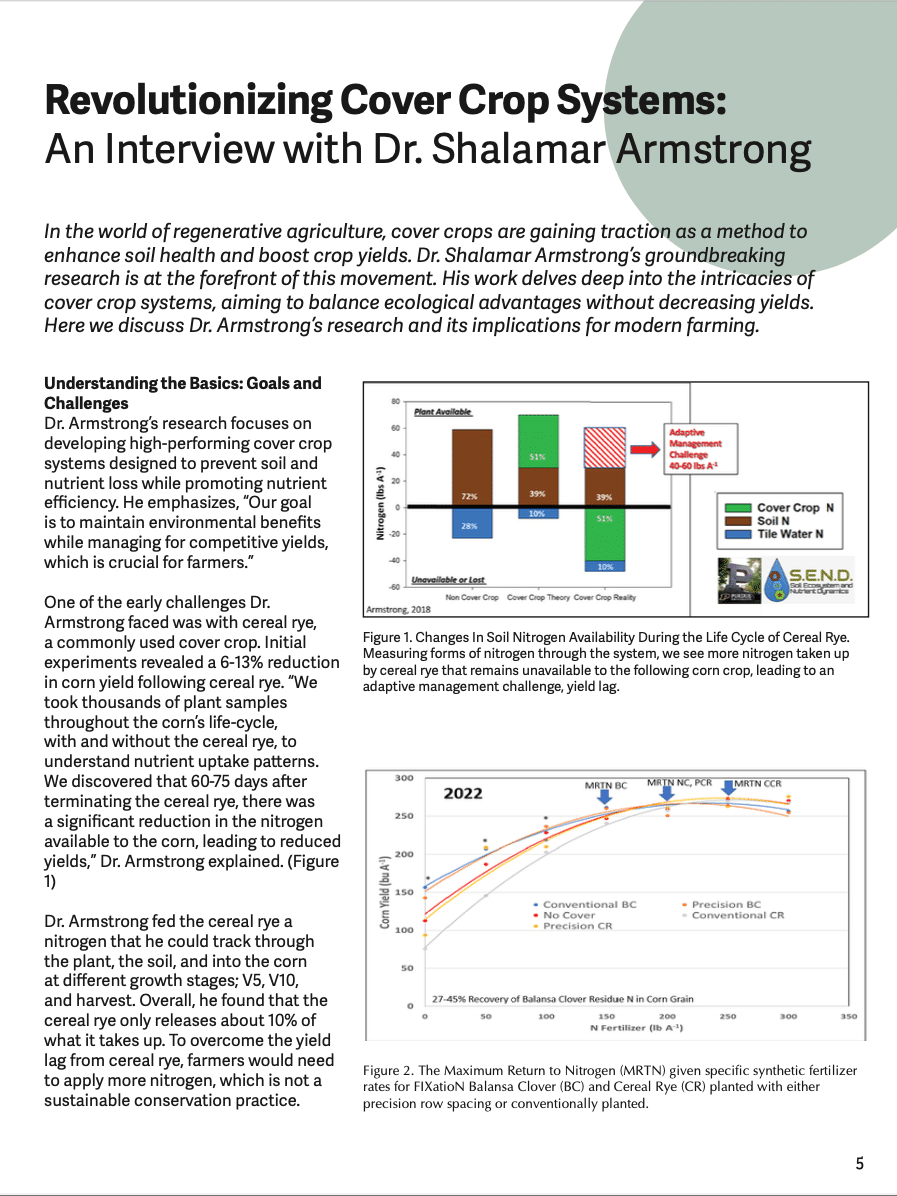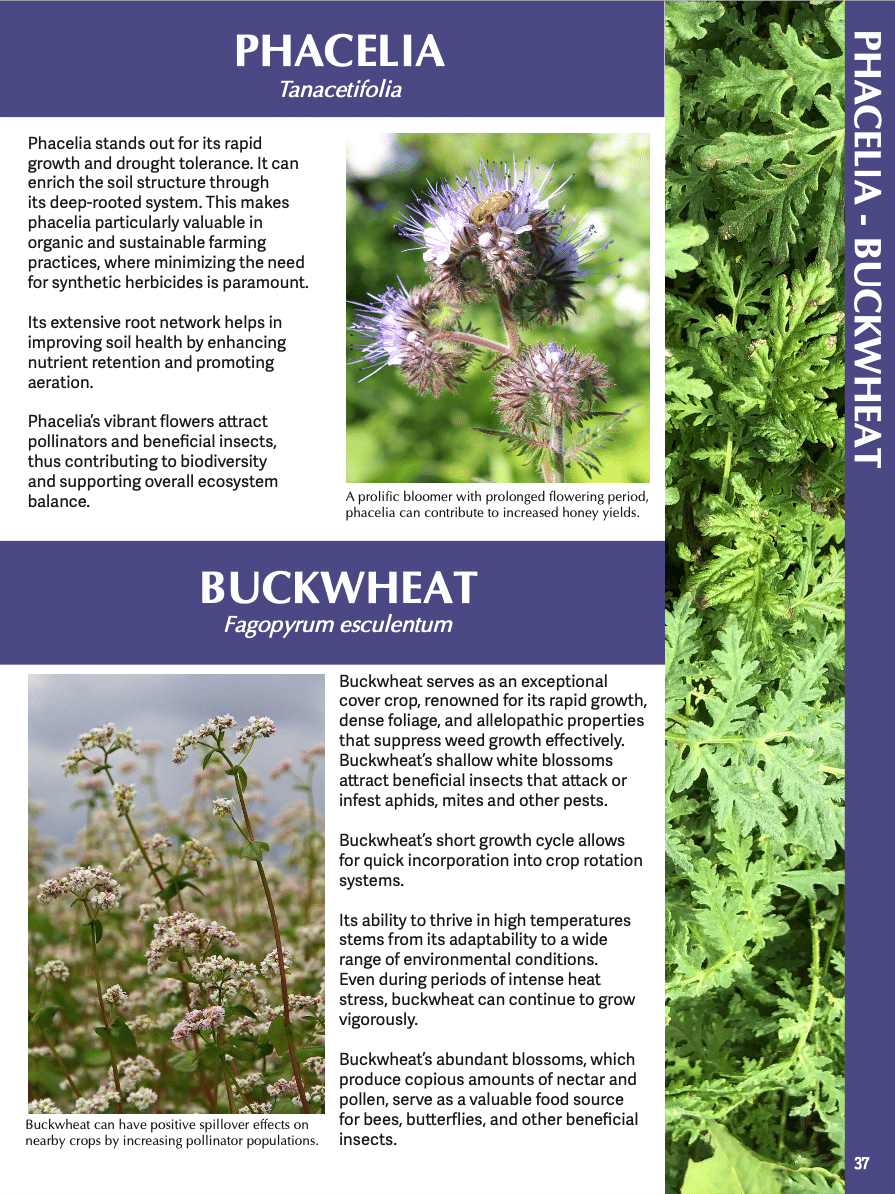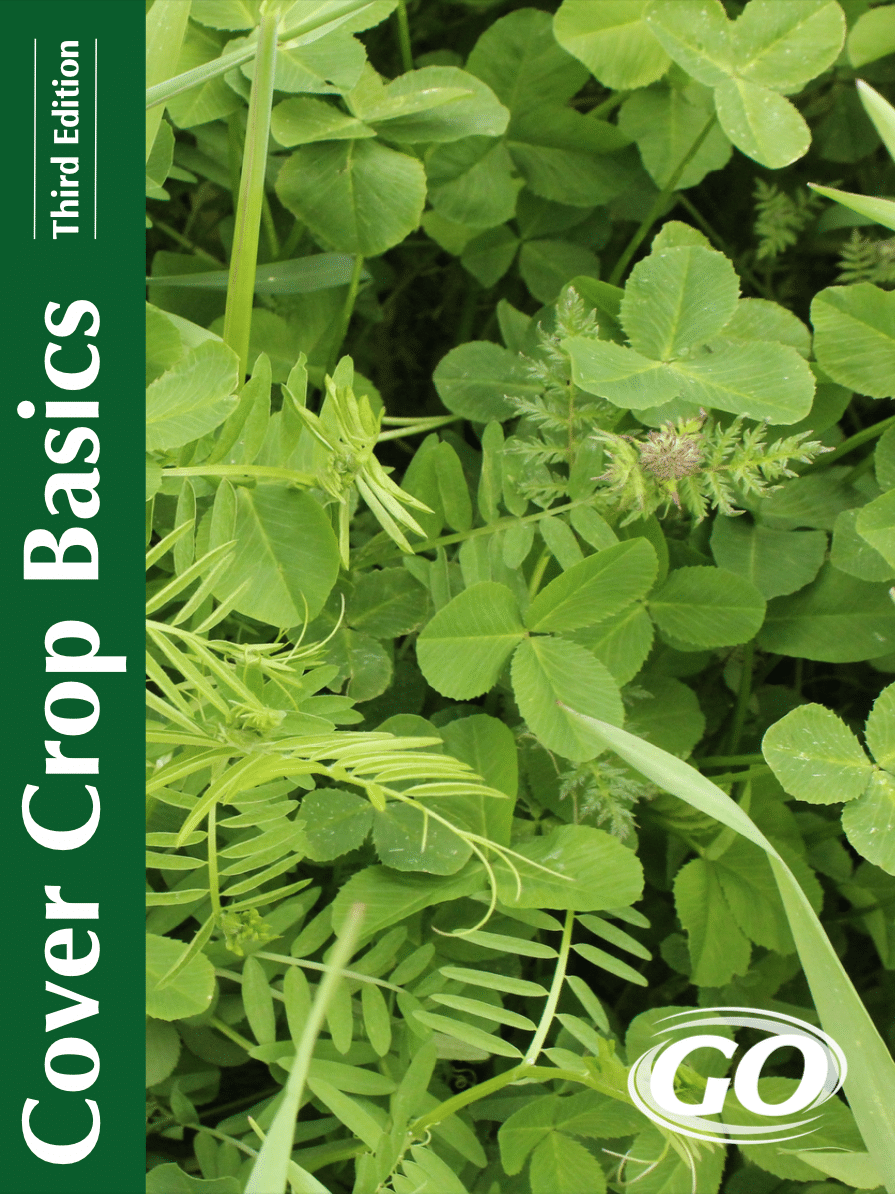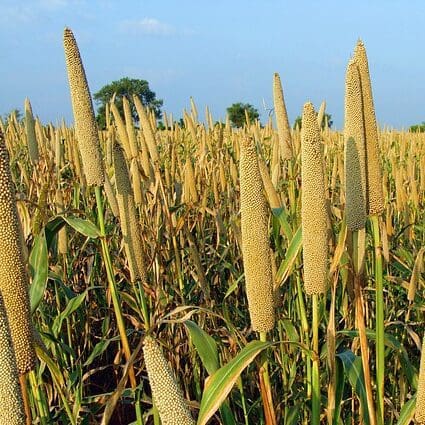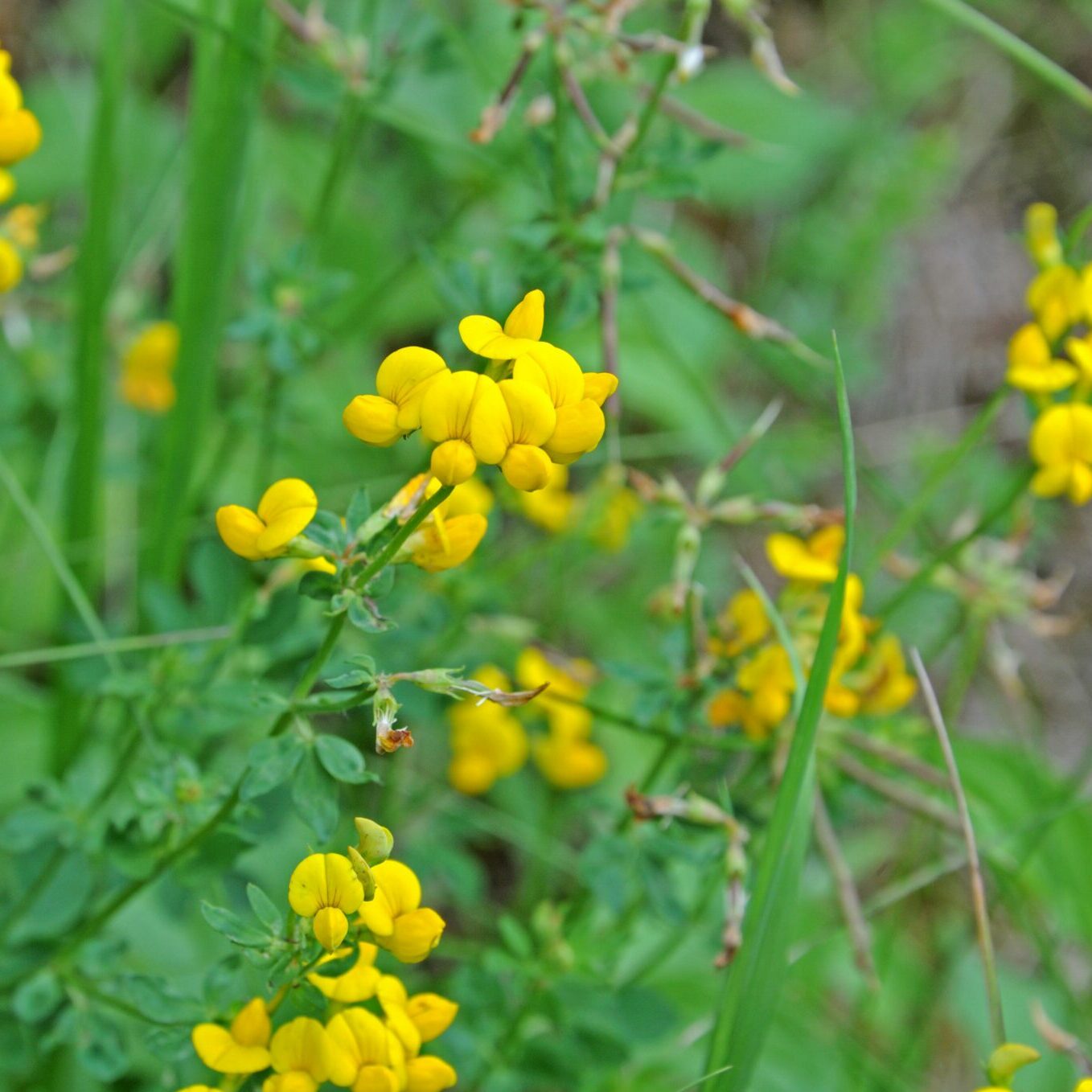Min. to Max. Annual Precipitation
72in.
Average Max. Height
Honeysuckle Sorghum Sudangrass is a cross between sorghum and sudangrass with a finer stem. Used primarily for forage, grazing, green chop, silage and hay. It is a warmer season annual grass and will regrow after each harvest. It performs best in moderate to well drained soils. Planting usually occurs from May to July. Soil temperature needs to be a minimum of 60 degrees fahrenheit for germination.
Honesuckle Sorghum Sudangrass
Because of shipping constraints, this item cannot be sold through our website. If you would like to order this item in any quantity (up to an including pallet or truckload quantities) please call us at 435-283-1411.
Honeysuckle Sorghum Sudangrass (Sorghum x drummondii) and our Delayed Maturity Sorghum Sudangrass are our own Haystack Mountain Brand line of Sorghum Sudangrass. They are used primarily for forage, grazing, green chop, silage and hay.
Sorghum Sudangrass is a cross between sorghum and sudangrass with a finer stem. It is a warm season annual grass and will regrow after each harvest. The maximum growth height is 15 feet tall and typically has small seed heads. The leaves are similar to corn like many sorghum varieties but are shorter and sometimes wider. There are approximately 21,000 seeds per pound.
Adaptation
Sorghum sudangrass is adapted throughout the United States and southern Canada. However, it performs best in moderate to well drained soils. This variety with grow best in soil with a pH between 5.5 and 7.5. Drought tolerance is high with the water requirement being approximately 1/3 less than corn.
Land Establishment
Planting rates vary from 30 – 50 lbs/per acre depending on whether the seed is broadcast or planted in rows. Seeding depth should be 1 inch. Planting usually occurs from May to July but can be earlier in the deep South with little chance of frost. Soil temperature needs to be a minimum of 60 degrees Fahrenheit for germination.
Perfect Management
For optimum forage production, moderate fertility is suggested although sorghum sudangrass will grow on lower fertility soils with better results than corn. Fertilize using soil test recommendations. If a soil test is not available, fertilize at similar rates to other annual grass crops.
If you would like graze sorghum sudangrass it should begin when the plants are between 18 to 30 inches tall and grazed down to 8 inches within 10 days. To ensure the highest quality forage after grazing, the residue needs to be clipped to a minimum uniform height of 8 inches. If this is done then the next grazing period could be in 3 to 4 weeks. If there is a killing frost do not graze for 7 days or until the plants turn completely brown. If there was early frost damaged, wait until the regrowth is at least 18 inches high before grazing again.
Green chop harvesting should begin when the sorghum sudangrass is 18 inches tall and should be completed before the plants begin to head out. If you are harvesting for silage it should be done when the plants are 36 to 48 inches tall or in the boot to early head stage. After harvesting at this stage, moisture is usually too high and the plants should be allowed to partially dry in the field before ensiling. Rapid, uniform drying is critical for sorghum sudangrass hay to prevent spoilage. For best results, delay feeding silage 6 to 8 weeks after ensiling to allow prussic acid to dissipate. Never feed sorghum sudangrass to horses.
Cover Crop Basics
An informative, authoritative guide to cover crops. Very comprehensive, and covers all geographic regions of the USA. Published by GO Seed.
Who is Great Basin Seed?
Great Basin Seed is a seed company that specializes in seed sales and consultation for home, ranch, farm, range and reclamation. We have been a leader in the seed industry since 1974.
Our History
We've been in the seed business since 1974.
What We Offer
We offer seed for home, farm, ranch, range and reclamation projects.
Meet the Gang
We have the best employees in the world! We are proud of the work they do, and trust them to serve you!
Right: Company founder Lloyd and his wife Paula Stevens in a wildflower seed production field circa 1977
Quick Plant Facts
| Common Name: | Sorghum Sudangrass |
|---|---|
| Scientific Name: | |
| Lifespan: | |
| Origin: | |
| Plant Type: | |
| pH Tolerance: | |
| Seeds per Pound: | |
| Growth Height: | |
| Root Form: | |
| Planting Rate: | |
| Min. Precipitation: | |
| Best Time to Sow: | |
| Max Sowing Depth: | |
| Growth Season: | |
| Sun & Shade Tolerance: | Full Sun |
| Elevation of Occurance: |
